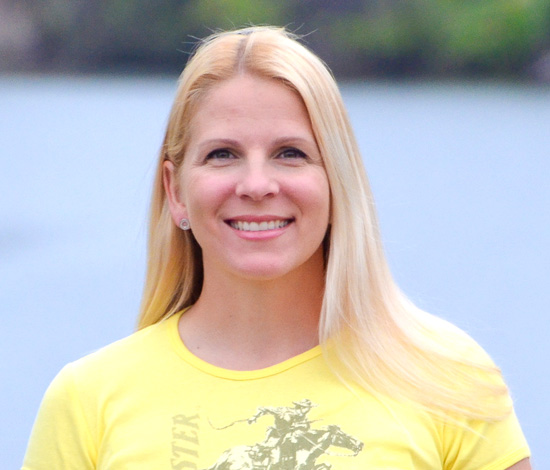How to Improve Stance and Grip as a New Pistol Shooter
For a new shooter, pistol can be a daunting firearm to learn. While handguns are smaller and lighter than a rifle or shotgun, they require more technique to have a better experience.
Two of the biggest areas where you can make the most improvement are in the stance and grip. How you stand and how you hold the gun will have a much bigger impact on how you shoot the gun than almost anything. Start at the ground, build up & lean into it.
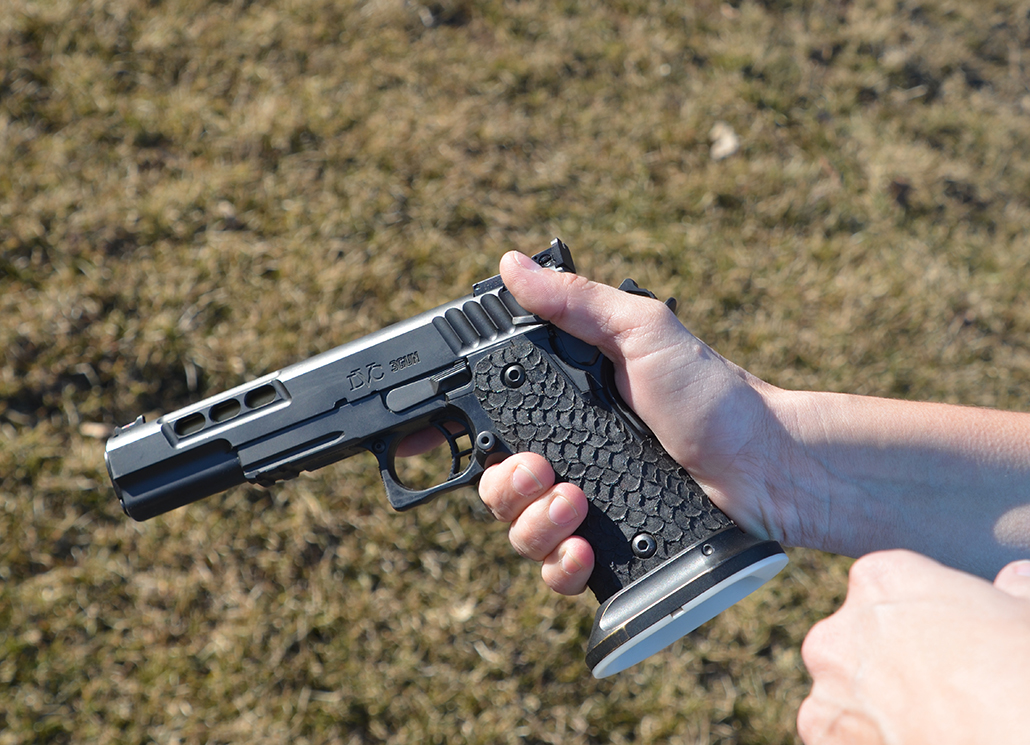
Build up your position from your feet. Imagine standing like someone was trying to knock you off balance. Your feet should be about shoulder width apart, and for right-handed shooters, your left foot will be slightly forward and right, slightly back.
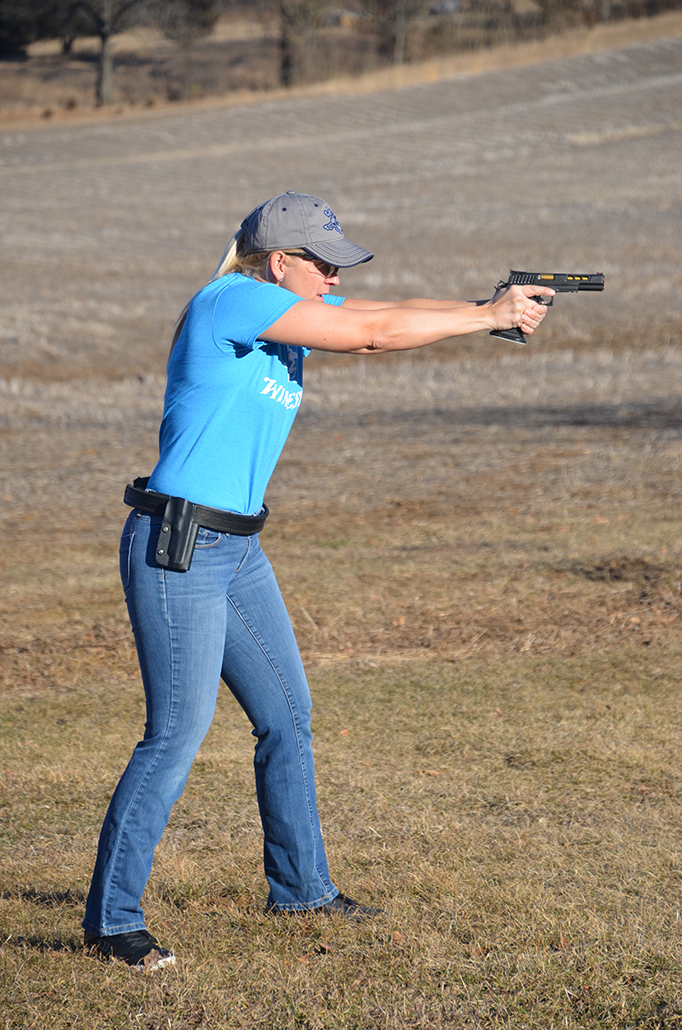
Most sports require a bit more athleticism that we are used to associating with shooting, and while handguns are small, the athletic part is really about your balance, and finding the right place to hold your balance. Most sports require us to prepare for the need to adjust our balance. For a sport where something will impact us, we stand with an aggressive stance. Shooting requires that you are not so much aggressive as“active.” The gun won’t hurt you, but the recoil can knock you off balance. The best place to watch for that is in your toes. If you rock back when you shoot, or your toes come off the ground, you need to shift your weight over the balls of your feet more. I tell people to hinge at their hips, just like you would if you were skiing and wanted your weight forward.
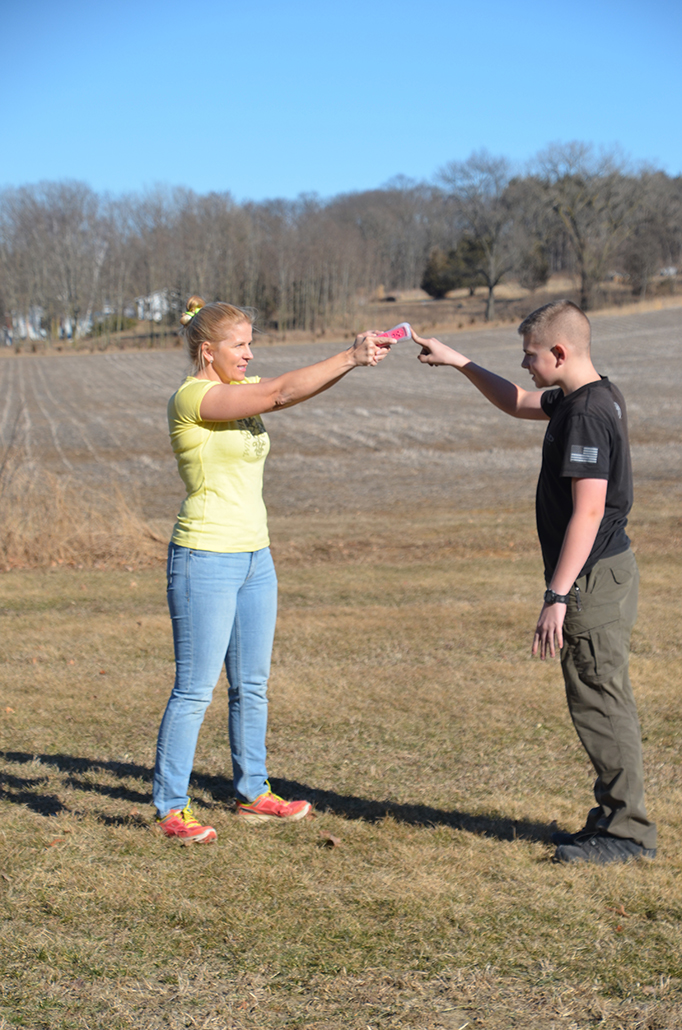
Think about your toes!
Your toes can be a good indicator of whether you are indexed or have a natural point of aim. If your torso and feet point toward what you are shooting, you’re on the right track. If your feet or torso are not pointed toward the target, you’re going to be fighting your body.
Get a grip.
Gripping a gun means something different to every single person. It’s subjective. “Grip hard,” “grip firm,”and “grip with enough pressure to control the gun”…those all mean something different when they happen inside our own brains/bodies. What you have to do is control the gun enough to keep it from moving, and get the sights back on target quickly.
Some very experienced shooters will tell you that in a competition (at the end of a stage), their hands hurt and are tired. They grip so HARD. Others will tell you to grip 80% with your support hand, 20% weak hand. However, it’s all about what you have strength for and what YOU need to do to control the gun. 20% for a guy with very muscular hands might me a small person’s 75%.
The fine motor skills needed to pull the trigger and break the shot when the sights are aligned and on target is not a “hard as you can” gross motor movement. It’s a fine motor skill, and fine motor skills require relaxation. So, there is a need to find the right grip.
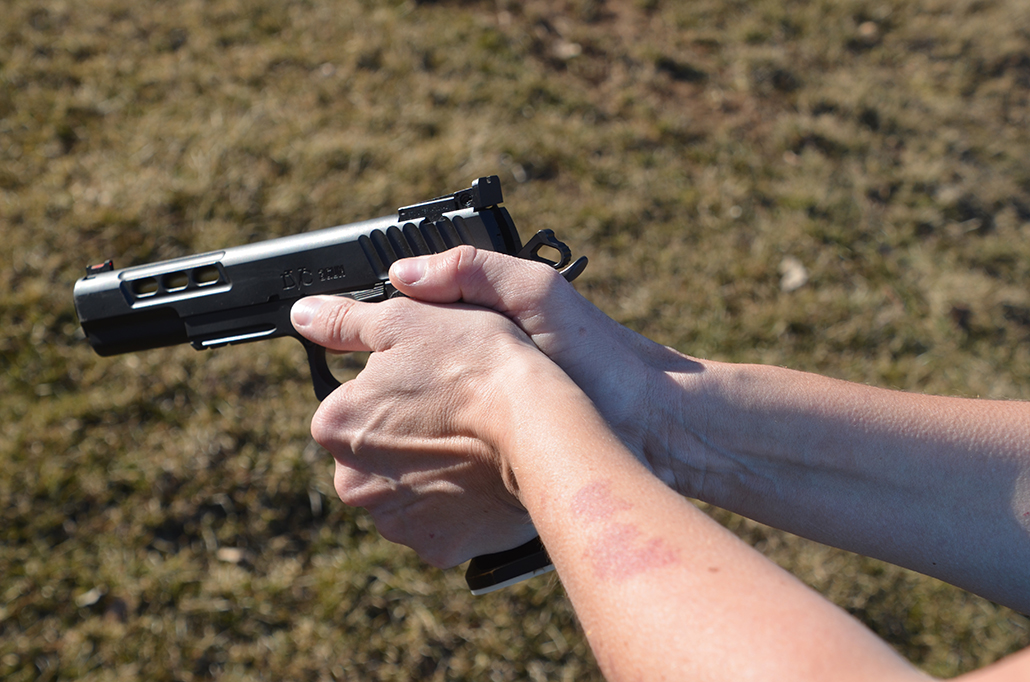
How do you know what’s right?
How do you decide what’s right for you? Practice. First, dry fire. Hold the gun, practice building your grip from a draw so that all of the flesh you can get in contact with the grip is there, in contact. Consider the placement of both hands, and using bone structure to help control recoil (camming wrist). There are many refinements you can add to your grip, but to start, you need to know the very basics.
The Basics:
Grip with two hands on the pistol grip. Strong hand wraps around the grip to place your finger comfortable on the trigger, and the support hand wraps around other side. Place your palms touching, or as close to touching as you can get them. Let the meaty part of your hand be the mass behind the gun. Grip so that the web of your thumb/palm is high on the backstrap of the gun. The slide recoils back and we want to counter that force by having some mass directly behind it; as high up on the backstrap of the pistol grip as possible.
So, take these ideas, do some dry fire and see if you can maintain your balance while someone gives you some resistance, if not adjust your feet. Try to grip your gun so that a training partner can’t tip or roll it up, simulating muzzle flip. Adjust as you feel what it takes for you to make your gun stay where you want it.
Thanks for reading, and be sure to follow Winchester’s blogs for more handgun shooting tips this year!
